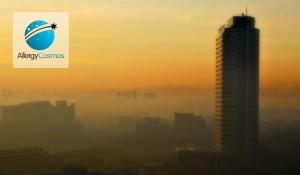Residents of Singapore were shocked, recently, when a dense cloud of air pollution suddenly descended upon their city-state. When air pollution in Singapore was measured, it was in the hazardous zone and even 'off the scale', leaving many fearing for their health. The incident is reminiscent of high levels of pollution reported from Beijing last year and earlier this year, although the cause is actually quite different.
Where is the air pollution is Singapore coming from?
Biomass burning (also known as 'slash and burn') in nearby Sumatra (an island in Indonesia) is believed to be the cause of the Singapore pollution incident. The wind moved the smoke from the burning (which was being carried out illegally to prepare land for palm oil plantations) to create a haze over Singapore that first became noticeable on 17 June and, over the next few days, developed into a thick cloud of pollution, creating fear and alarm among residents and tourists alike. Conditions have now returned to near normal after several days of high pollution, but residents note that this has become a yearly occurrence – although conditions this year have been particularly bad. By contrast, in Beijing, the pollution incidents have been firmly linked to emissions from coal-fired power stations and local traffic.
What levels of air pollution in Singapore have been recorded?
Measurements of the Pollution Standards Index (PSI) hit 401 on June 21 and even went above 500 in the days to follow. These are the highest pollution levels ever to be recorded in Singapore. The PSI is a scale used in Singapore and based upon a scale originally devised by the United States Environmental Protection Agency (where it has since been superseded by the Air Quality Index, which is also used in the United Kingdom). The PSI ranges from 0-500. Health effects from air pollution increase with PSI as follows:
0-100 – no health impacts expected
100-150 – those who are particularly sensitive to air pollution (e.g. those with asthma, the elderly), likely to suffer health effects
150-200 – serious impact on those who are sensitive, noticeable effects among the general population
200-300 – very unhealthy conditions, most people will be affected
300 + - conditions pose a severe health hazard
Above 400, exposure is said to be life-threatening to the ill or elderly
What is the Singapore government doing about this pollution?
Needless to say, the pollution situation in Singapore has created tension between the Singapore and Indonesian governments, culminating in an apology from the Indonesian Prime Minister to the people of Singapore and nearby Malaysia, which has also been affected. Singapore will assist Indonesia in putting out the fires and both governments have pledged to work towards a permanent solution.
Meanwhile, the Singapore government has issued lower-income groups and vulnerable groups, like the elderly, with N95 masks. The N95 mask is meant to remove over 95 per cent of particles of size 0.3 microns and is often used in infection control. Sales of masks have also been brisk. There is some evidence from China that face masks may be effective in protecting against the health effects of inhaling air pollution. The best masks can trap ultrafine particles (UFPs, less than 0.1 microns in size) which would otherwise be inhaled deep into the lungs. But an issue with face masks is always that they need to have a near-perfect seal - which is hard to achieve. Furthermore, for people with existing respiratory problems, a face mask that restricts the airflow, might cause a problem in itself and result in breathing difficulties.
The government has also advised those, particularly at risk to stay indoors. Of course, outdoor pollution can penetrate indoors so it's no surprise that there has been a surge of interest in purchasing air purifiers to cleanse indoor air in Singapore.
What short-term and long-term health effects can be expected from being exposed to the air pollution in Singapore?
Biomass burning produces a toxic cocktail of particles and gases. The exact short and long-term health impacts would be hard to assess, because the exact composition of the pollution is unknown, particularly for those 'off the scale' days. However, the fact that the pollution was so visible over Singapore is likely a very bad sign.
Exposure to Particulate Matter (PM) pollution exacerbates pre-existing heart and lung conditions, including asthma, with UFPs being of particular concern, as they can penetrate into the lungs and bloodstream, setting up a chronic inflammation.




